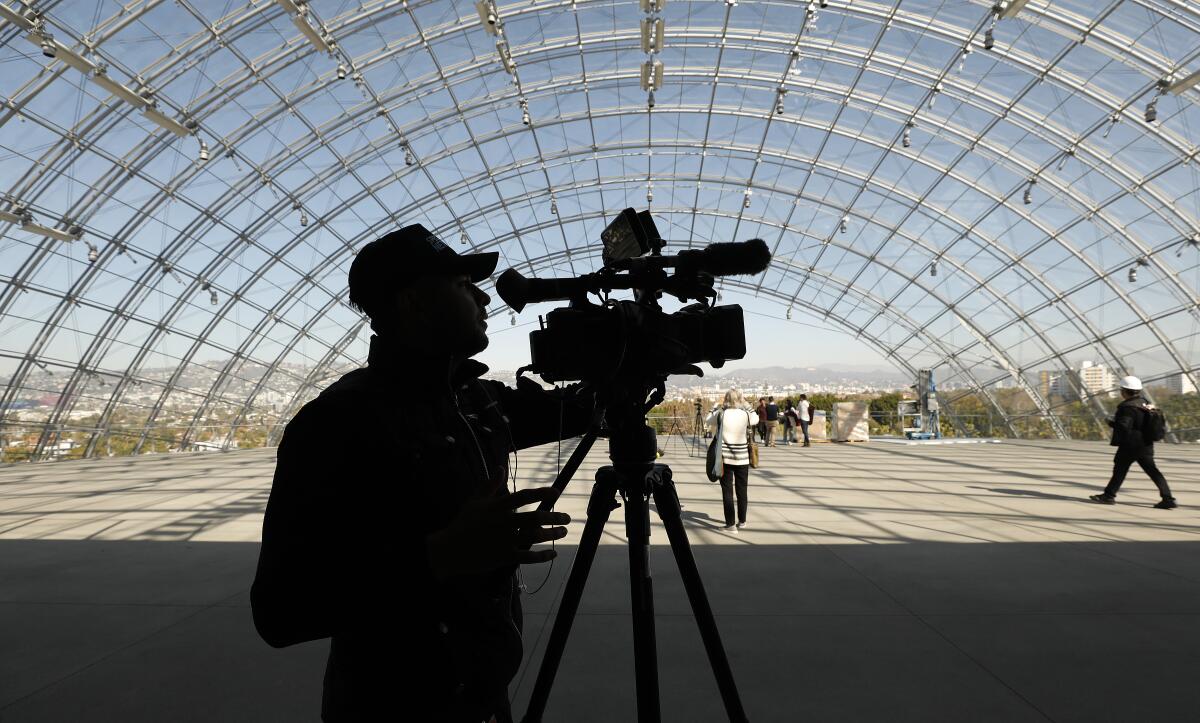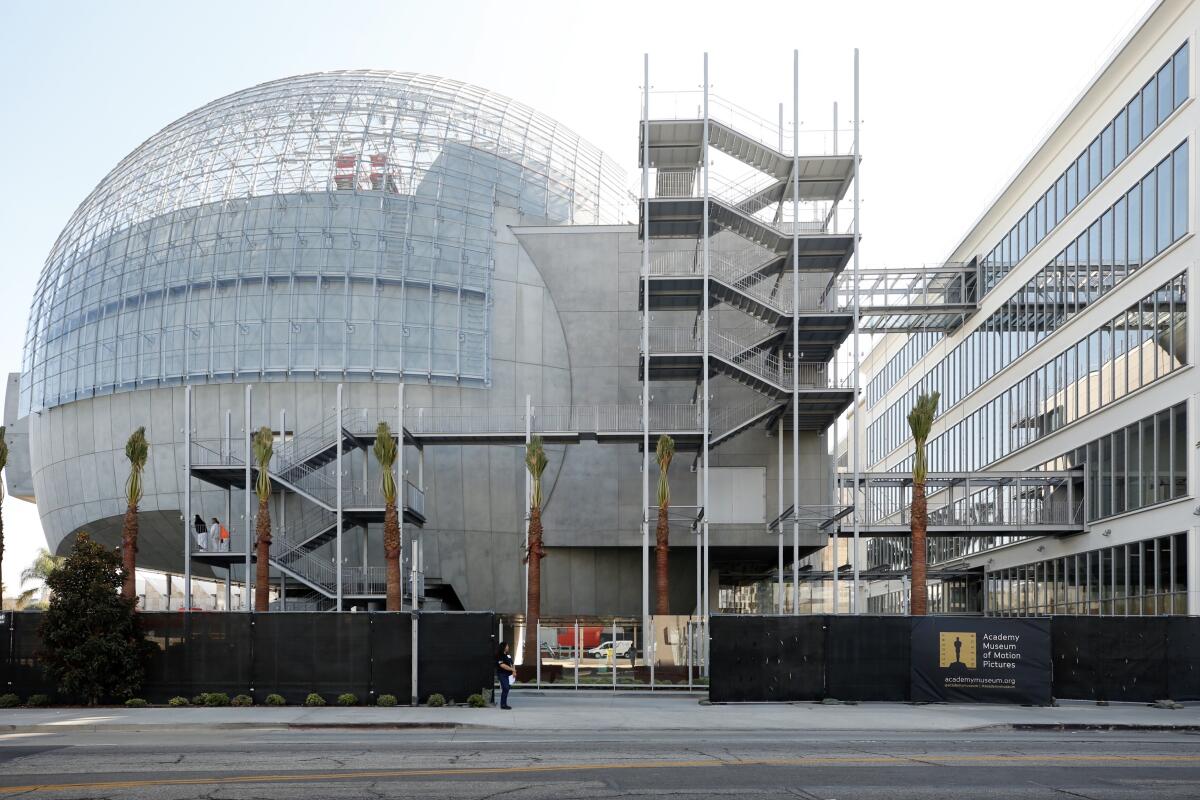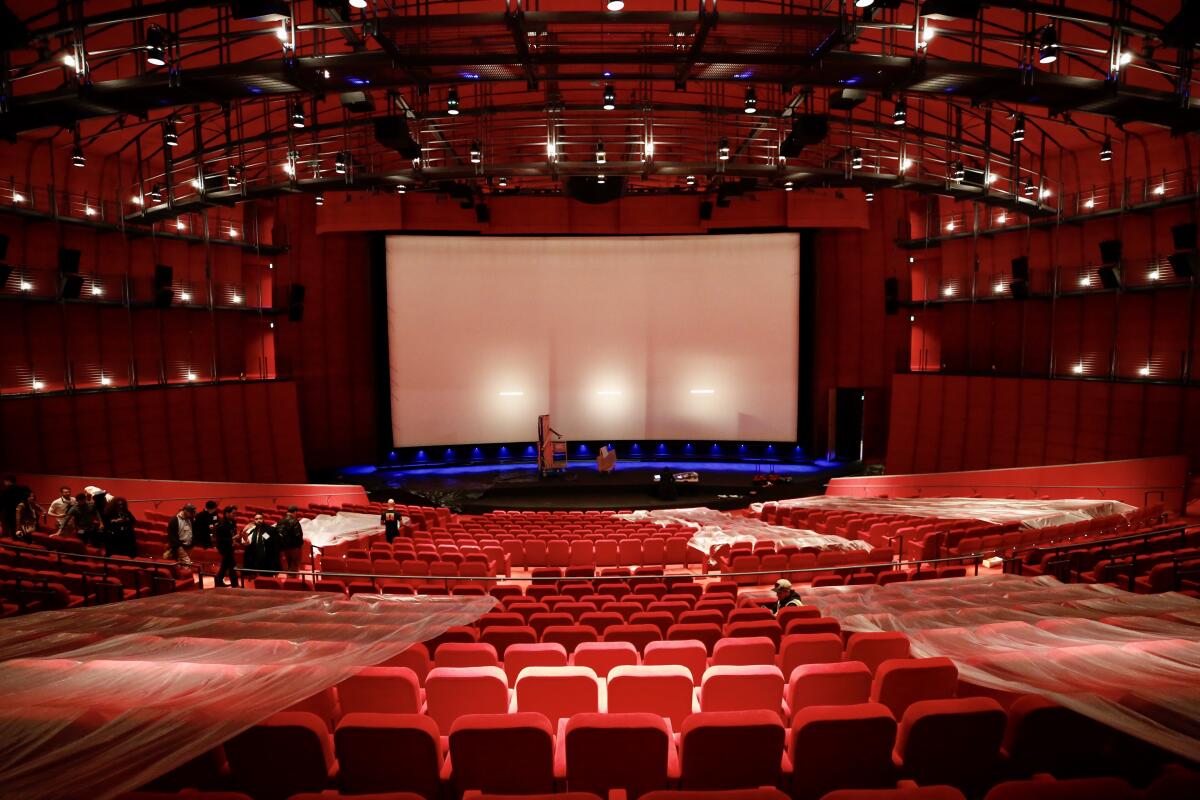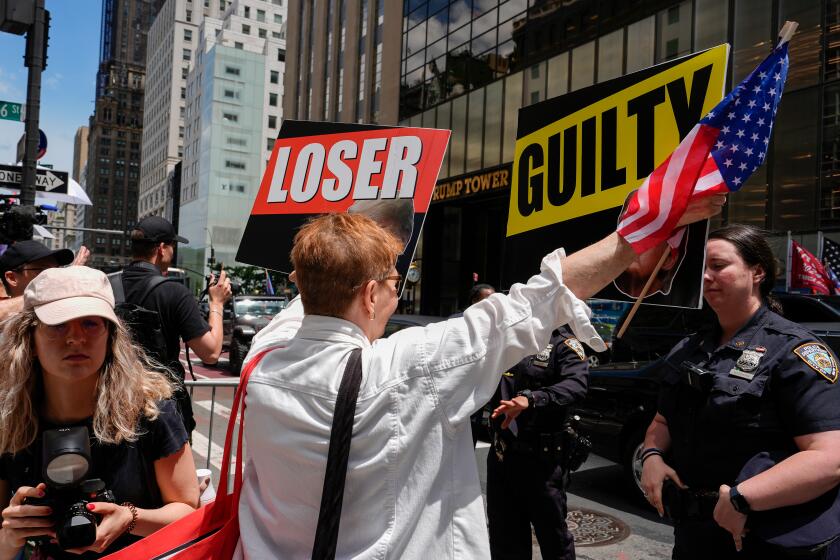Academy Museum of Motion Pictures will open in December

The Academy Museum of Motion Pictures claimed the Oscars stage Sunday to tout its own forthcoming premiere: The long-delayed, much-anticipated Los Angeles museum devoted to filmmaking will open Dec. 14.
Academy President David Rubin took the stage to discuss the decades-long quest to build a museum devoted to moviemaking, then he introduced two-time Oscar winner Tom Hanks, who revealed the opening date.
The announcement ends some of the suspense surrounding the $388-million Renzo Piano-designed project, which has been a drama unto itself, its story line filled with infighting, fund-raising difficulties, cost overruns and delays. Museum Director Kerry Brougher exited in August after five years on the project; last month, Bill Kramer took over, marking the return of the man who had served as the museum’s managing director of development and external relations from 2012 to 2016.
The museum’s opening date had been pushed back from 2017 to mid-2019 to late 2019, then to an undetermined date in 2020. Now that an opening has been set, the clock begins ticking. Although most of the major structural work has been finished, mechanical, electrical and plumbing details such as HVAC systems, elevators and alarms still must be finessed. Crowd flow is being refined, gallery walls are being configured and exhibitions still must be installed.

That last point is possibly the biggest question mark. Since Kramer’s appointment was announced in October, the museum has reconceived the two-story core exhibition on the history of filmmaking. Permanent exhibits will be replaced with a more nimble plan that calls for sections to rotate and items on view to be swapped out regularly.
The museum will have 50,000 square feet of exhibition space. About 31,000 square feet will go to the core exhibition, which draws on a 5,000-plus-piece collection of costumes, equipment, production design paintings, puppets and other objects. Most recently, the museum acquired Bela Lugosi’s cape from 1931’s “Dracula.”

The museum also will dip into the academy’s film archive and its Margaret Herrick Library of mostly works on paper. Representatives said the guiding principle remains not only to celebrate the past, present and future of film but also to present “complicated narratives” and “complete stories” in the history of moviemaking.
The inaugural special exhibition will be a retrospective of filmmaker Hayao Miyazaki, the first major U.S. exhibition of his work. Museum officials have said the show will include character designs, storyboards, film clips and concept sketches from the director of “Spirited Away,” plus immersive environments transporting visitors into Miyazaki’s worlds through 3-D build-outs and wall projections.
That will be followed by the special exhibition “Regeneration: Black Cinema 1900-1970,” about the history and representation of African American filmmakers from the birth of moviemaking through the civil rights era of the late 1960s. Doris Berger of the Academy Museum and Rhea Combs of the Smithsonian’s National Museum of African American History and Culture were announced as the curators. The exhibition is partially funded by the Sotheby’s Prize, a $250,000 grant for projects that focus on under-represented areas of art history.
During the Oscars ceremony Sunday, Spike Lee said he was curating an inaugural exhibit for the Academy Museum.
“It’s all my stuff, hundreds of items,” Lee said. “Photos, everything I’ve collected over the years. I’m bringin’ it all outta the vault.”

Gallery displays will be complemented with screenings and other events. The most prominent part of Piano’s design is the concrete sphere dubbed the Death Star, which contains the 1,000-seat David Geffen Theater. It’s topped by a terrace with a glass-paned dome overlooking the Hollywood sign.
A 288-seat theater named after movie theater magnate Ted Mann will be used for daily screenings, lectures, performances, panel discussions and other events, officials said.
The museum gave a sneak peek Friday for more than 200 journalists from around the world gathered for the Oscars, and the event represented the light at the end of a very long tunnel for the academy. The organization spent close to $50 million to buy a plot on Vine Street in Hollywood for a museum in 2005. Two years later, when the French architecture firm Atelier Christian de Portzamparc was chosen to design the museum, groundbreaking was scheduled for 2009 and the academy’s then-president, Sid Ganis, said he hoped the ribbon would be cut in 2012.
Fundraising efforts failed, however, and in 2011, the academy board voted to try again — this time by reconfiguring at the 1939 May Co. building owned by the Los Angeles County Museum of Art next door. The academy paid LACMA $36.1 million for a 55-year lease on the former department store and adjacent land, with the option to renew the lease for an additional 55 years at no further cost.
In 2013, Piano’s first designs for the new museum were released, and the target opening date was set for mid-2017.
“I love what they’re doing with the museum,” Miky Lee, executive producer of “Parasite,” said Sunday after the film won four Oscars, including best picture. “They want to make it relevant. It’ll be educational and entertaining and fun.”
Lee, who is on the board of the Academy Museum, added: “The museum is already embracing filmmakers from around the world, directors from other countries.”
The global nature of modern moviemaking also was on the mind of fellow museum board member Katherine Oliver late Sunday. “I think what the academy showed tonight is that this industry is an international industry,” she said. “And the new museum is going to reflect that in its programming and exhibitions.”
The Los Angeles County Museum of Art wins major funding from the Keck Foundation. The Peter Zumthor-designed building had seen fundraising slow.
More to Read
The biggest entertainment stories
Get our big stories about Hollywood, film, television, music, arts, culture and more right in your inbox as soon as they publish.
You may occasionally receive promotional content from the Los Angeles Times.






